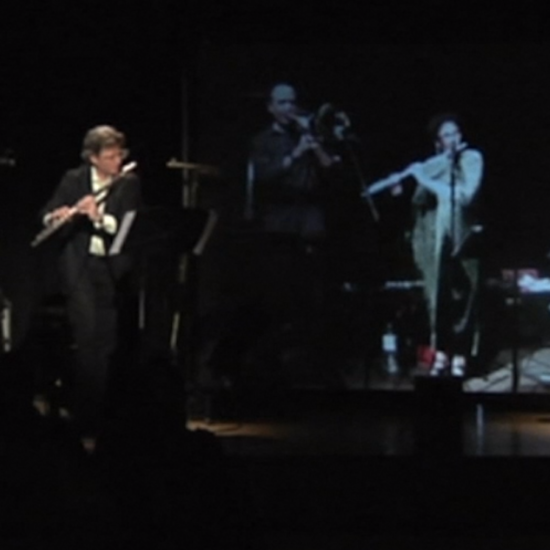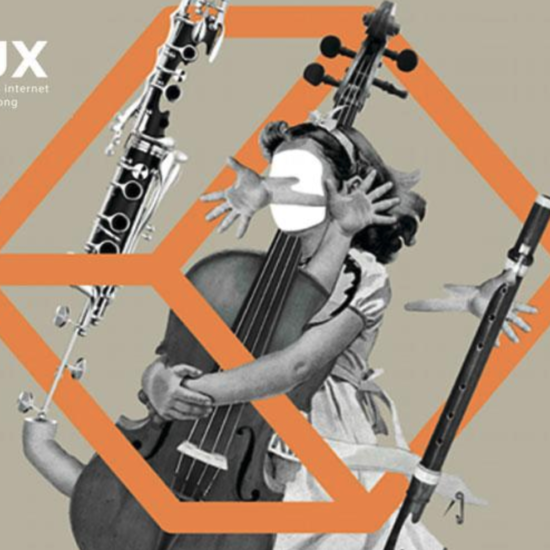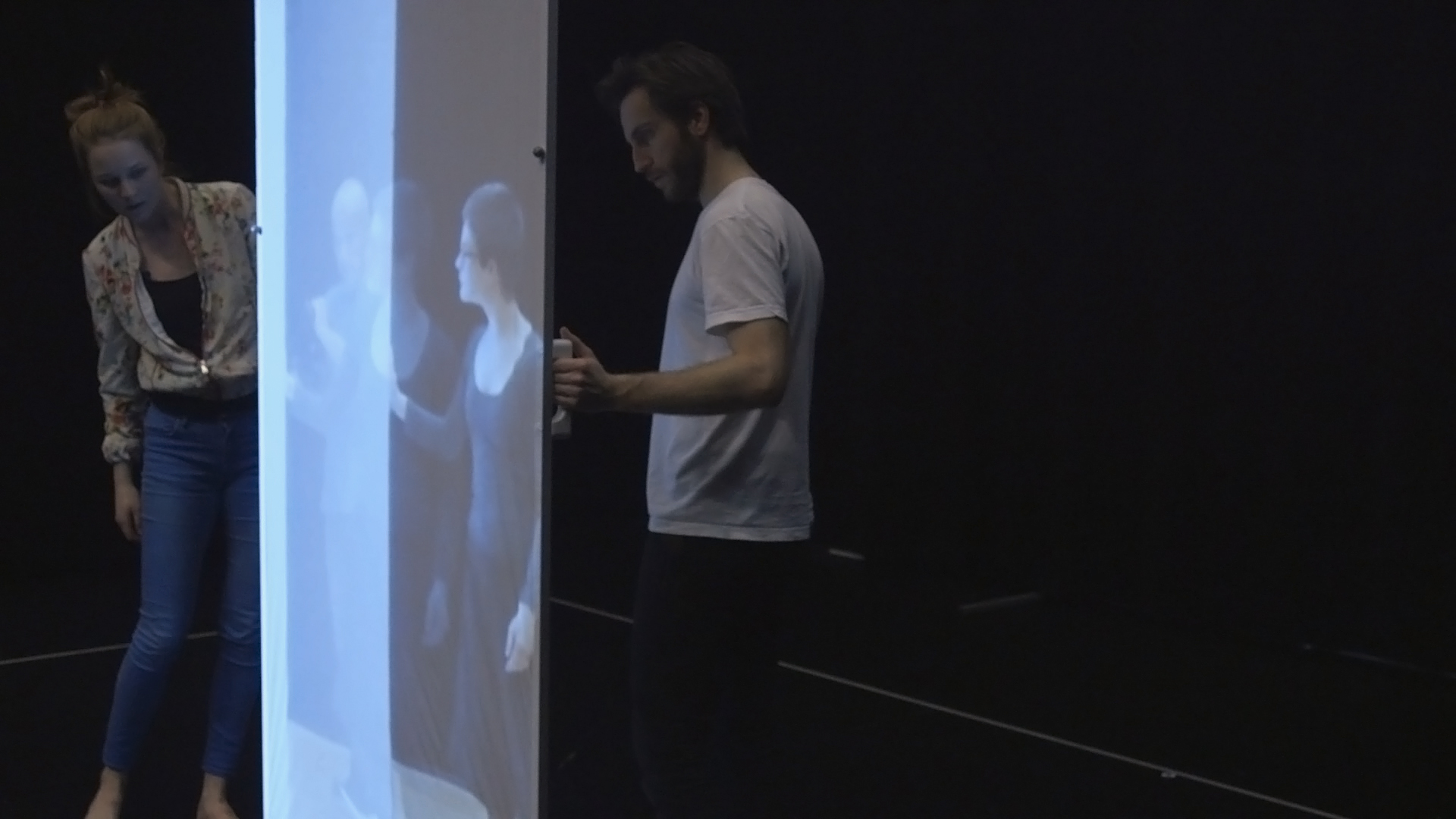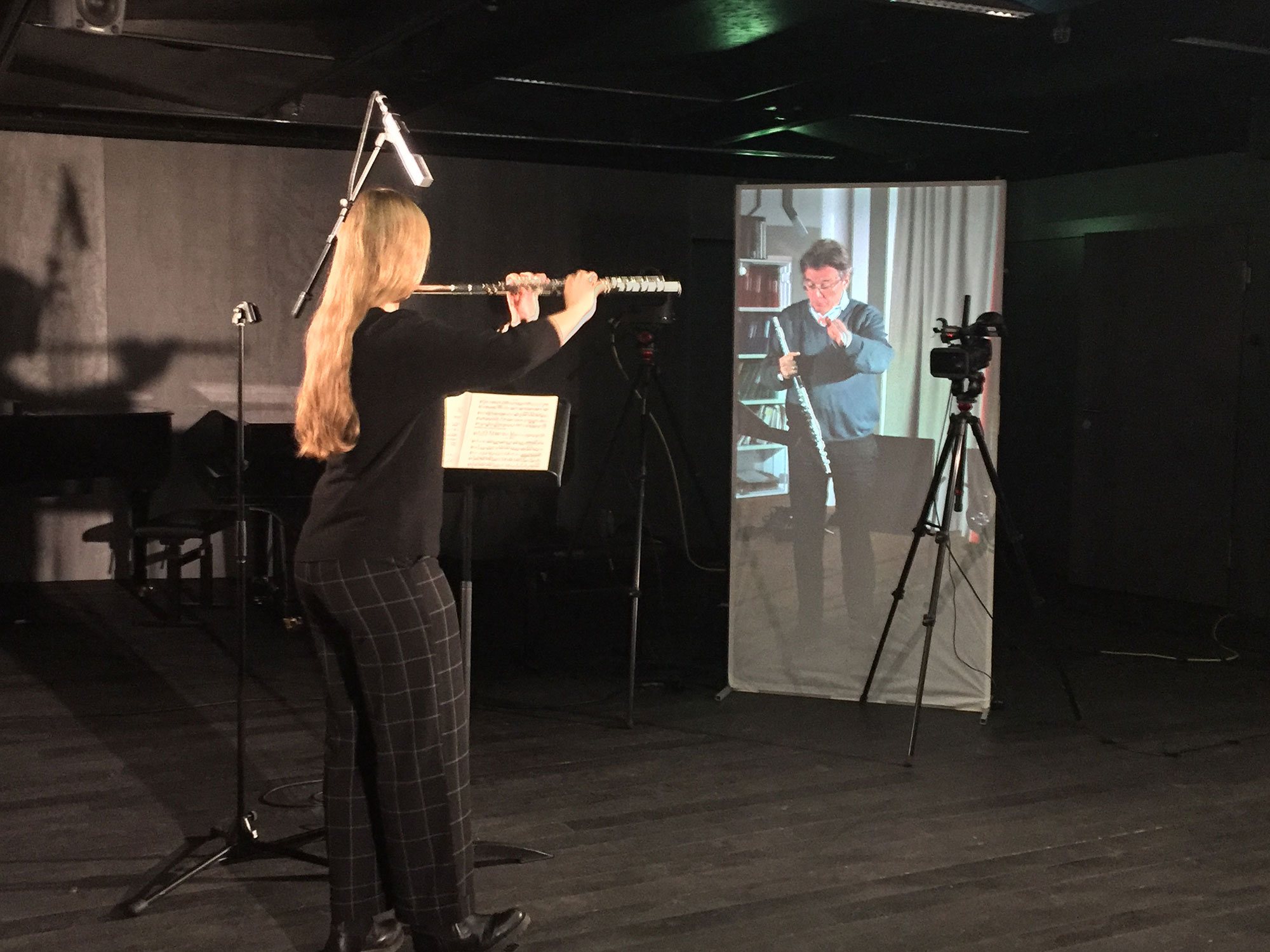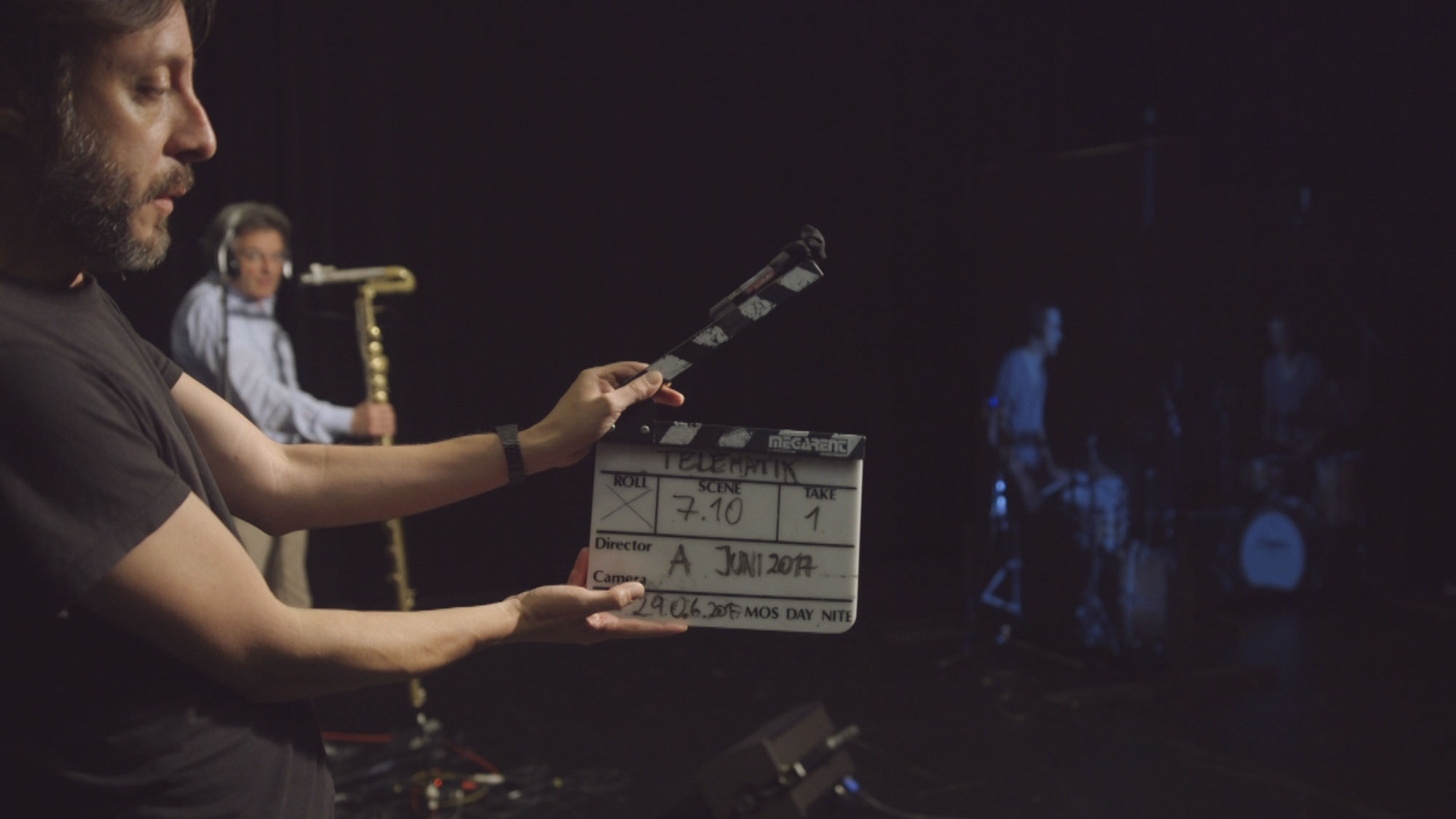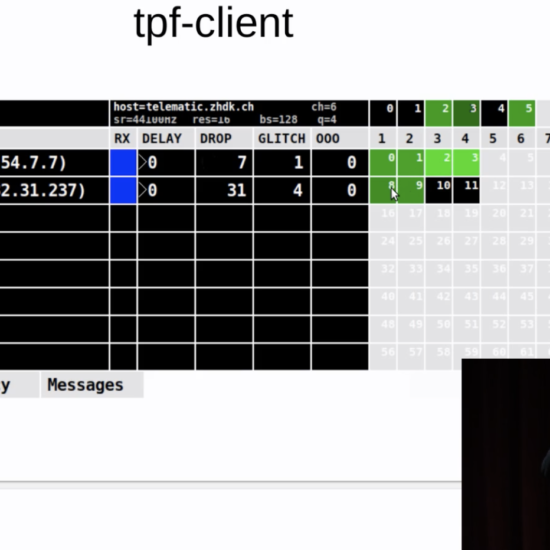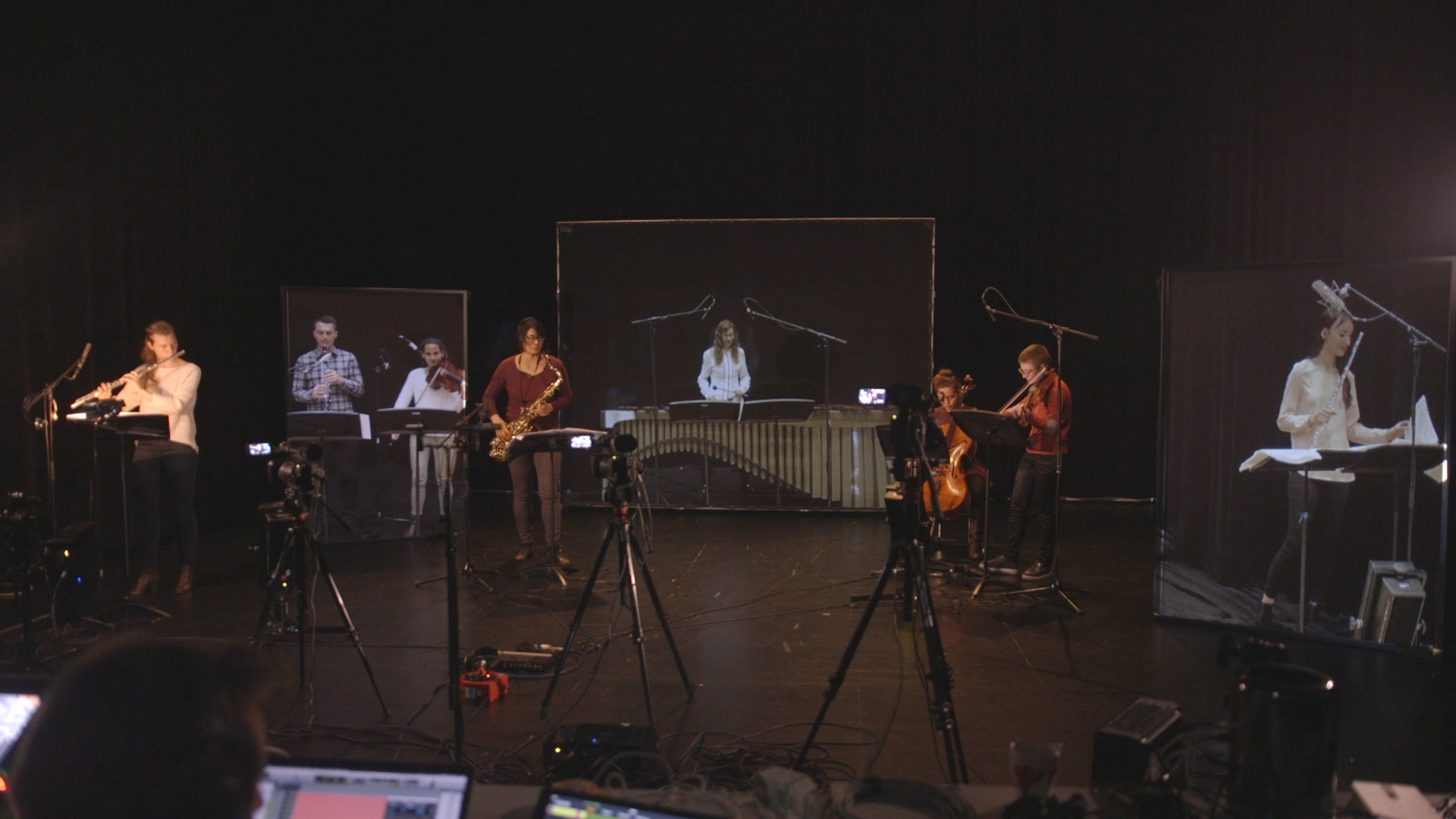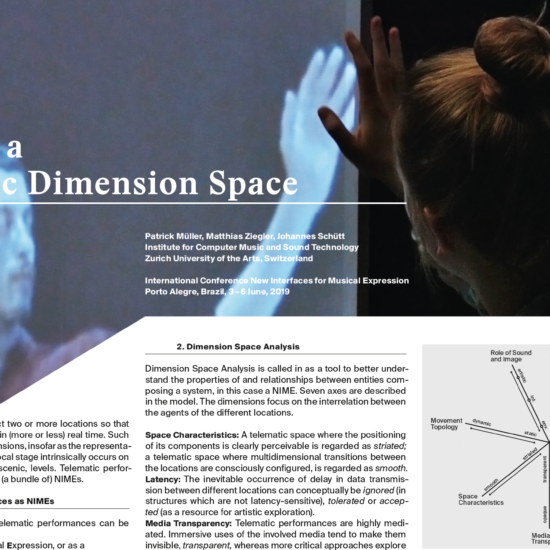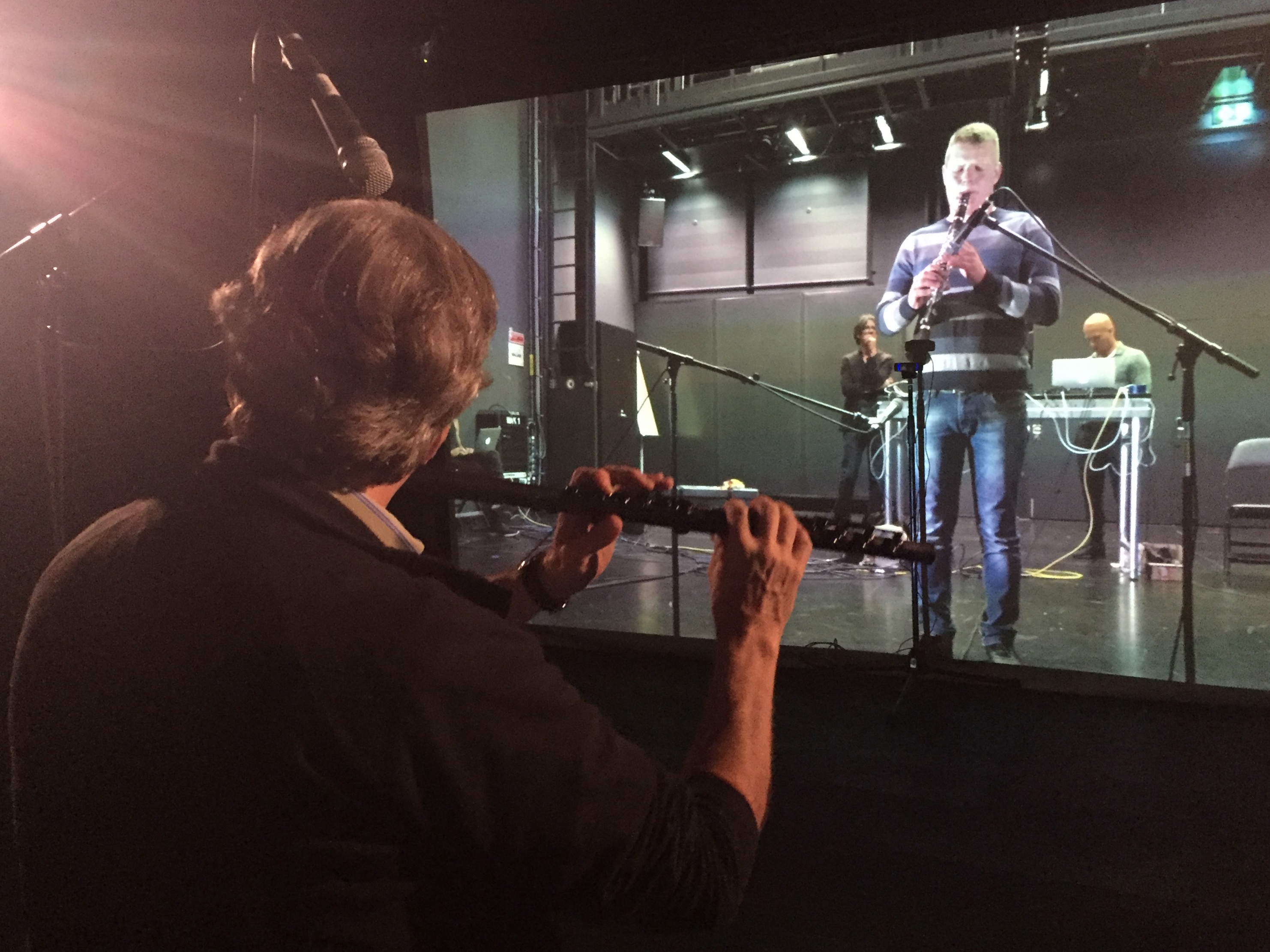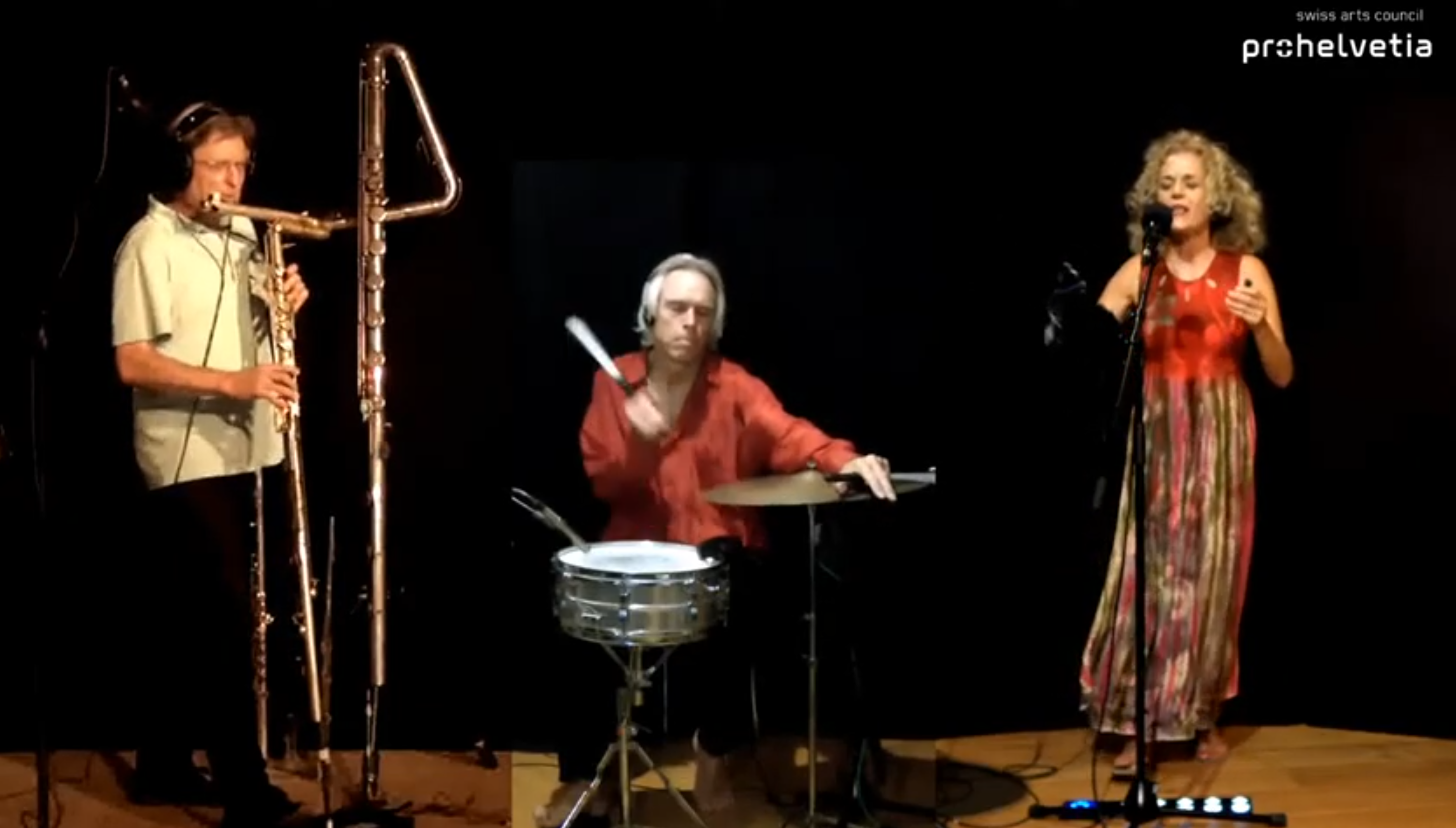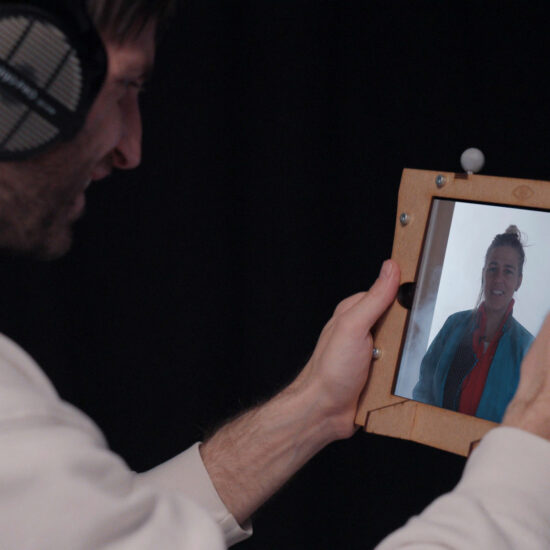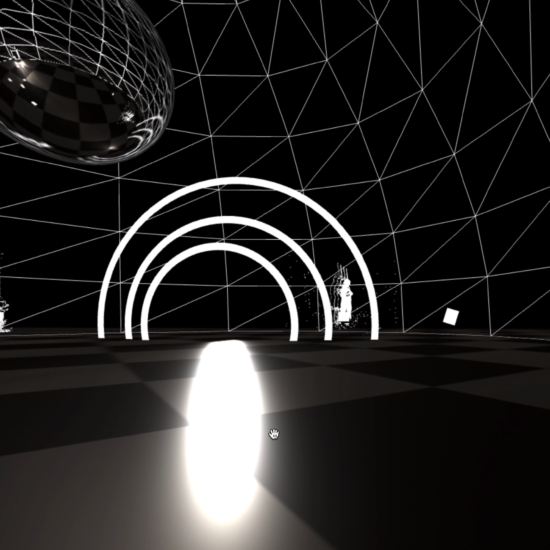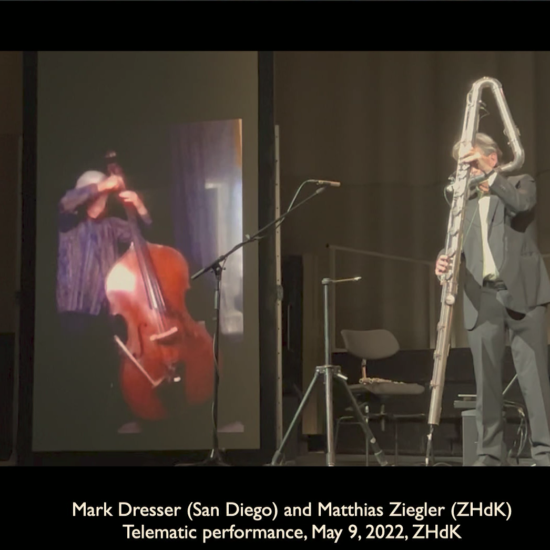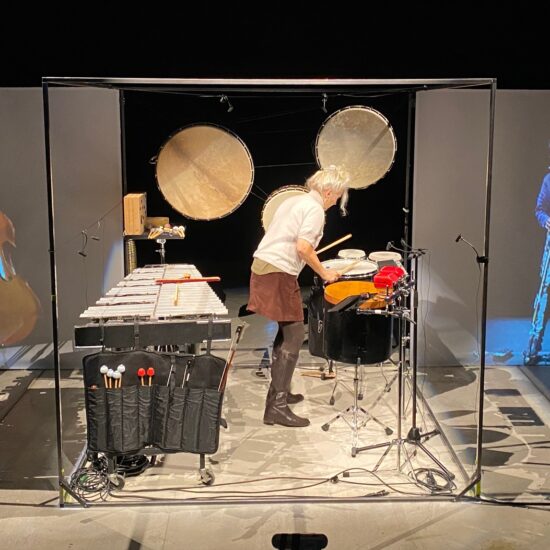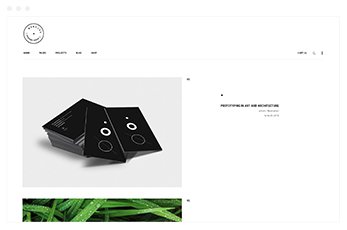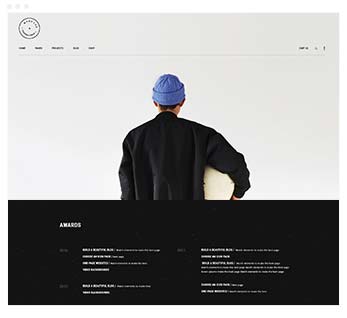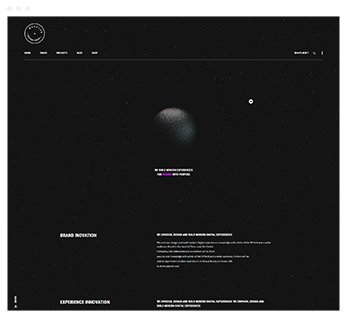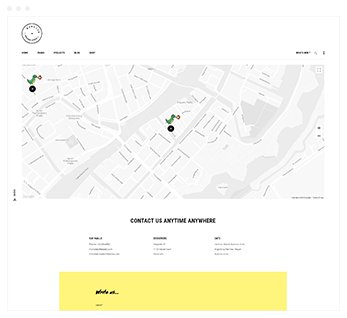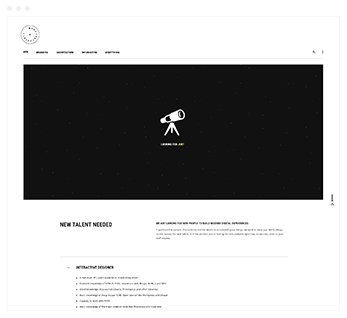Latency is one of the main issues in telematic performances. The term refers to the amount of time the audio signals need to travel between different locations. As an indication of how crucial this is, a one-way latency above a threshold of 20-30 milliseconds makes it near-impossible to play together in a pulse based music environment.
However, if the system is fine tuned, if there is a stable internet connection and if the distance is not too big (not more than 500 kilometres), on might achieve such low latencies. With this, a Realistic Interaction Approach is possible.
With that said, latency is an integral part of the telematic performance medium, so why not play around with it!?
One option is the so-called Master-Slave-Approach. Here, one of the performers, the ‘master’, plays strictly in measure. The partner at the remote location, the ‘slave’, aligns according to the score, which sound almost perfect. However, the ‘master’ receives the signal with a delay, and as such, it will sound different at the master’s location.

